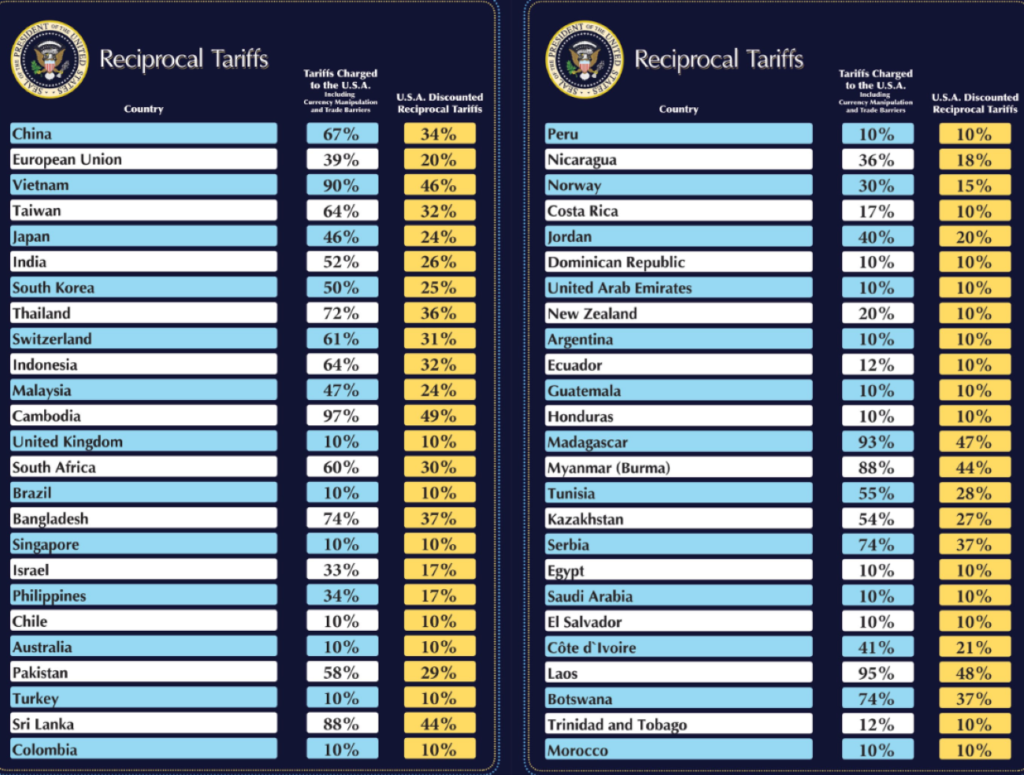China faces additional 34% tariff, while Vietnam faces 46% rate
WASHINGTON — Some of the furniture industry’s largest source countries would be hit with tariffs ranging from 20% for the European Union to 46% on Vietnam based on numbers released by the Trump administration Wednesday.
The rates have been labeled reciprocal tariffs to address high tariffs those countries charge for goods they import from the U.S. Many of the reciprocal rates are estimated at half of the rates of those tariffs, with a minimum of 10% charged to countries such as Brazil, Chile, Australia and Turkey, which are charging 10% to the U.S., according to the president.

Yet for the furniture industry, which buys much of its product from Asia, the amounts are particularly alarming.
China would be charged 34% based on its 67% tariffs on U.S. products. This would be in addition to the 20% tariff rate imposed in February, according to Bloomberg. Meanwhile, Vietnam would be charged 46% based on its 90% tariffs on the U.S.
The highest tariff for an Asian country is Cambodia, which faces a 49% tariff based on its 97% tariff on U.S. products, followed by Thailand, which faces a 36% tariff in response to its 72% tariff on U.S. products.
Other major furniture exports on the list include Indonesia, 32% based on 64% it charges on U.S. products; Taiwan, 32% based on its 64% on U.S. products; India, 26% based on 52% tariffs on the U.S.; 24% on Malaysia based on its 47% tariff on U.S. products; and 17% on the Philippines based on its 34% tariff rate on U.S. goods.
Canada and Mexico also face 25% tariffs, but it was unclear whether that included some or all furniture produced in those countries.
Some industry sources are still holding out hope that the administration is using the tariffs as a negotiating tactic for these other countries to lower their own rates on the U.S. But the administration appeared adamant about its decision.
“Large and persistent annual U.S. goods trade deficits have led to the hollowing out of our manufacturing base; inhibited our ability to scale advanced domestic manufacturing capacity; undermined critical supply chains; and rendered our defense-industrial base dependent on foreign adversaries,” President Trump said on The White House website. “Large and persistent annual U.S. goods trade deficits are caused in substantial part by a lack of reciprocity in our bilateral trade relationships. This situation is evidenced by disparate tariff rates and non-tariff barriers that make it harder for U.S. manufacturers to sell their products in foreign markets. It is also evidenced by the economic policies of key U.S. trading partners insofar as they suppress domestic wages and consumption, and thereby demand for U.S. exports, while artificially increasing the competitiveness of their goods in global markets. These conditions have given rise to the national emergency that this order is intended to abate and resolve.”




